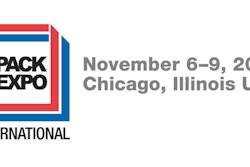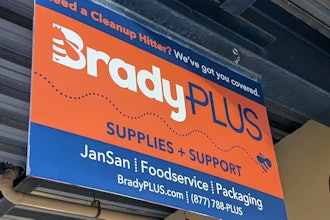Although checkweighers have been part of the food production landscape for several decades, a variety of new factors are impacting how and why they are being used today.
The primary purpose has always been to confirm that the product weight at least equals that stated on the label. The goal is to give consumers what they have been promised and, in so doing, make sure that standards established in governmental regulations have been met.
The package has to provide an appealing visual impact to support the product. This drives the creation of an endless variety of shapes and sizes. The end game is to deliver what consumers want so that sales objectives can be met.
However, as packaging types, size and consumer drivers have evolved, so have the performance demands placed on checkweighers and the way they are used in production environments.
|
Factors driving change in packaging |
Checkweigher manufacturer response to meet these demands |
|
Total cost of ownership |
Selective bundling of features for specific applications; upgrades of existing systems |
|
Fresh food |
Ability to handle new flexible packages; provide washdown options |
|
Contamination |
Combining checkweighers with metal detectors or X-ray inspection systems |
|
Line rates increasing |
Improved signal processing and mechanics to weigh packages in less time |
|
Production tracking and reporting |
Communicate real-time info to plant via data management system |
|
Labor force skill level |
Interfaces designed for increased ease of use; multiple languages |
Total Cost of Ownership
Gone are the days when a food processor just looked at the cost of the checkweigher. Now, savvy manufacturers look at the total cost — and benefit — of ownership. For example, if a checkweigher can lead to a 1 or 2 percent raw material savings per day, that’s a significant benefit. And that doesn’t include recaptured energy and labor savings, or reduction in discarded product. For larger food companies, product giveaway can end up in the millions of dollars.
Another factor in considering total cost of ownership is the value of eliminating customer complaints due to underfills, and the potential loss of future purchases. What follows below are additional factors that food processors analyze when evaluating the purchase of a new checkweigher and potential return on investment.
Multi-Component Packages
In addition to meeting the net content listed on the label, an off-spec weight can indicate that a piece in a multi-component package (such as boxed candy) is missing, or an extra piece has been inserted. Component under- or over-fills negatively impact everything from visual presentation to consumer perception of the brand’s quality. A checkweigher is just one way to help insure this is not occurring with your product.
Nutritional Expectations
Another major driver today is the nutritional aspect of packaged or fresh foods. Health-conscious consumers scour these items for a variety of nutritional information ranging from ingredient content to percentages of protein, fat, sodium and more. If the weight is not correct, neither is the specific data (percentages, grams, etc.) reflected in the label. With portion control being a strong focal point in many dietary plans, it’s important to meet portion control expectations.
Managing Raw Material Costs
A critical aspect of any food production facility is managing raw material costs. With prices being driven down and margins getting slimmer in some categories, giving product away is a formula for disaster. Therefore, significant effort must be applied to reducing product giveaway, which should starting well before the packaging operation.
This means that food processors should consider deploying checkweighers farther upstream in the operation to help determine if there are anomalies in the filling operation, or feeding back the checkweigher information upstream to resolve a source of variance in the production process. For example, in a tortilla factory, a ball of dough may be prepared two hours and 200 feet away from a checkweigher which is located after the product is packaged. The baking process takes place in between the dough stage and packaging. It is possible that over- or under-weights occur during the earlier production stages, which could negatively impact the weight of a filled package.
Product Types Drive Production Line Changes
A greater emphasis on delivering fresher food items to consumers may mean that production facilities that were formerly running canned goods are now moving toward other package types that might be exposing the checkweigher to raw food items. This means that existing equipment needs to be substituted with machines that allow washdown.
Package handling is another important aspect of this conversation. Cans are typically easier and faster to handle due to their rigid and predictable shape. However, when you go from no structural variation with a can, to a flexible stand-up pouch, new handling challenges present themselves. Other package types with less rigidity include clamshells and cartons. Selecting the right piece of equipment, conveyor length and motor configuration will help ensure that performance requirements are met.
Extra care needs to be taken for the package transfer that takes place from the infeed conveyor to the weigh table, and then to the reject mechanism or to the case packing operation. The key here is to provide a smooth and seamless transition in order to minimize package vibration. Controlling this aspect translates into more accurate weighing.
Contamination Concerns
Another important consideration is making sure that the food item that is packaged and distributed is free of contamination. In addition to the safety aspect, the cost of a recall can have significant financial impact. This is another reason many food processors are requesting equipment with sanitary design washdown capability, such as IP69K rated.
Stripped Down Models
Conversely, stripped down models without some of the bells and whistles, such as washdown capability, are ideal for smaller companies who have never used checkweighers before. They may not need washdown capability or some of the other add-on features, but simply want basic checkweigher functionality. These basic models allow small or even start-up food companies to automatically weigh their product.
Technology Enhancements
How are these various needs and requirements being addressed? Checkweigher manufacturers are implementing both software and hardware upgrades, as well as structural design modifications.
A checkweigher has to be easy to use, accurate and convenient. It needs to be intuitive for the user and functional. Secure logins need to be part of the operating protocol to make sure the right person is doing the right thing; this also gives you traceability if a problem is found.
It’s important that equipment uses software interfaces that are easily understood. This goes hand-in-hand with generational changes. For example, younger workers are more likely to be more comfortable with the way a smart phone functions. They may prefer equipment that is interactive similar to other tools they use in their daily life.
Another equipment evolution is to move towards wireless interfaces. The challenge, however, is that plants tend to have a lot of metal (walls, beams, equipment, etc.) that may affect communication. Manufacturers are working on creating wireless interfaces that function well in a plant environment to collect data without anyone having to touch the equipment.
Production Line Speeds
Production lines are being pushed to deliver higher speeds. A few years ago, line rates were around 60 meters per minute. Now, it is common to see lines running upwards of 120 meters/380 feet per minute. This is attributed to improvements in controllers and the overall lower cost of electronics. Faster processors being integrated into new generation checkweighers are enabling equipment to keep up with faster line speed demands.
Reporting Capability
Important for any plant worried about traceability is the checkweigher’s ability to archive weight data. What used to be impractical from a cost standpoint has become easier to implement due to the digital storage media becoming very affordable. Because the checkweigher is one of the last pieces of equipment to touch a product on the product line, storing this data is a helpful tool should a problem arise later on.
In addition to storing data, checkweighers of today are expected to provide real-time data. This information is critical to identify production problems as they are happening.
Construction/Maintenance
Today’s checkweigher manufacturers have to design the equipment to meet a variety of challenges. During the product development processes, all of the components are reviewed to see if they can be easily manufactured and easily serviced after the machine is built.
Lastly, one size does not fit all. Checkweigher manufacturers are being pushed to design equipment that can be configured so that food processors can purchase the components that best suit their product and operation.






















